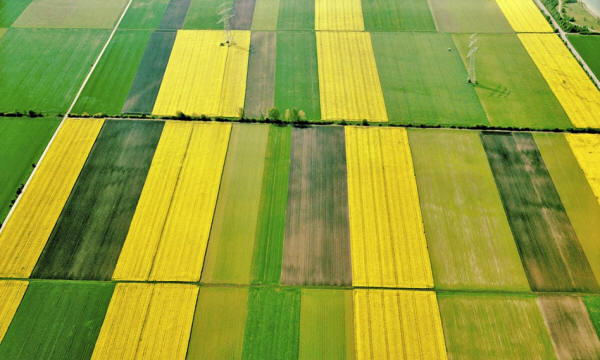|
from TheGuardian Website
Spanish version overlook the ecological benefits of regenerative farming.
Photograph: blickwinkel/Alamy behind geoengineering must be transformed to one that seeks a humble partnership with nature if we are to address climate change
Perhaps even more
troubling, geoengineering is a technological fix that leaves the
economic and industrial system causing climate change untouched.
More than a mere alternative strategy, regenerative agriculture represents a fundamental shift in our culture's relationship to nature.
Regenerative agriculture comprises an array of techniques that rebuild soil and, in the process, sequester carbon. Typically, it uses cover crops and perennials so that bare soil is never exposed, and grazes animals in ways that mimic animals in nature.
It also offers ecological benefits far beyond carbon storage:
But these methods are
slow, expensive and impractical in feeding a growing population,
right?
While comprehensive statistics are hard to come by, yields from regenerative methods often exceed conventional yields and see, ...for scientific research, and, ...for anecdotal examples.
Likewise, since these methods build soil, crowd out weeds and retain moisture, fertilizer and herbicide inputs can be reduced or eliminated entirely, resulting in higher profits for farmers.
No-till methods can
sequester as much as a ton of carbon per acre annually (2.5
tons/hectare). In the US alone, that could amount to nearly a
quarter of current emissions.
Rattan Lal of Ohio State University argues that desertified and otherwise degraded soils could sequester up to 3bn tons of carbon per year (equal to 11bn tons of CO2, or nearly one third of current emissions).
Other experts foresee even greater potential.
According to research at
the Rodale Institute, if instituted universally, organic
regenerative techniques practiced on cultivated land could offset
over 40% of global emissions, while practicing them on pasture land
could offset 71%.
Of course, none of this
is license to perpetuate a fossil fuel infrastructure, since there
is an eventual limit to the amount of carbon that soil and biomass
can store.
Maybe so, but in this case there is more to it than that.
Regenerative agriculture represents more than a shift of practices.
It is also a shift in paradigm and in our basic relationship to nature - as a comparison with geoengineering highlights.
We must turn away from an attitude of nature-as-engineering-object to one of humble partnership.
Whereas geoengineering is a global solution that feeds the logic of centralization and the economics of globalism, regeneration of soil and forests is fundamentally local:
These are not generic solutions, because the requirements of the land are unique to each place.
Unsurprisingly, they are
typically more labour-intensive than conventional practices, because
they require a direct, intimate relationship to the land.
It is calling us back to
our
biophilia, our love of nature and
of life, our desire to care for all beings whether or not they make
greenhouse gas numbers go up or down.
It is time to fall in love with the land, the soil, and the trees, to halt their destruction and to serve their restoration.
It is time for agricultural policy and practice to become aligned with regeneration.
|


